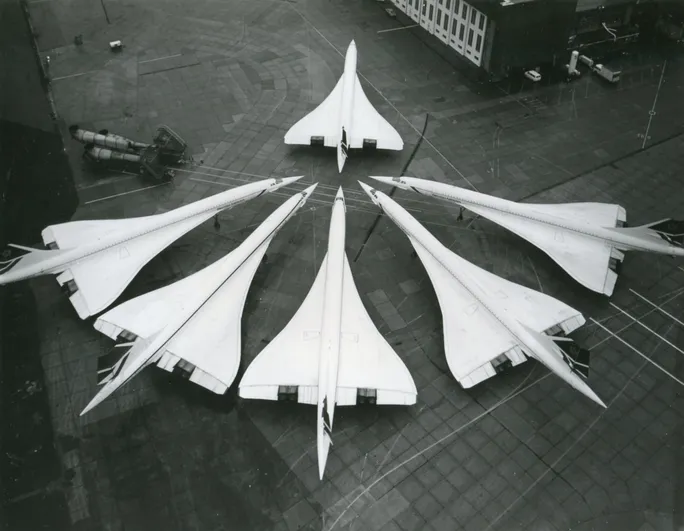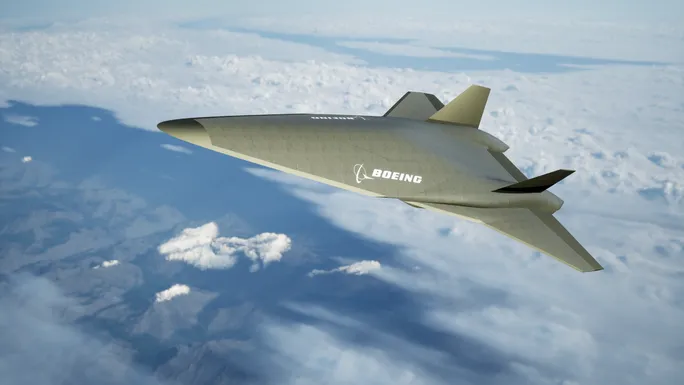NASA Takes Commercial Aviation One Step Closer To Supersonic Passenger Planes
It’s been two decades since the cost-prohibitive Concorde supersonic passenger jet was retired from service, taking the possibility of transatlantic flight at supersonic speeds off the table for even the wealthiest of travelers.
But, crossing the pond at up to four times as fast may become a possibility again in the not-too-distant future, given that the ultimate aerospace authority, NASA, has just published an updated look at the evolution of its “high-speed strategy”, namely its Quiet Supersonic Technology (Quesst) program.
The space agency confirmed that it’s currently, “exploring whether the commercial market could support travel at such speeds.” It reported, “NASA recently investigated the business case for supersonic passenger air travel aboard aircraft that could theoretically travel between Mach 2 and Mach 4 (1,535-3,045 mph at sea level). By comparison, today’s larger airliners cruise at roughly 600 mph, or about 80% of the speed of sound.”
These sector studies have already identified potential passenger markets for about 50 established routes, mainly transoceanic ones, since U.S. and international regulations currently prohibit supersonic flight over land. These would include high-volume transatlantic and transpacific flight paths.
Nowadays, routine commercial flights between New York City and London take approximately eight hours, and nearer seven if going the opposite direction. The Concorde’s maximum speed was Mach 2.04 (1,354 miles per hour) and its fastest flight on record from JFK to Heathrow took just under three hours. If a passenger plane were able to reach Mach 4, the crossing could potentially take a little as 90 minutes.

PHOTO: British Airways Concorde Fleet (Photo courtesy British Airways)
NASA’s Quesst
NASA’s Quesst program involves a government-agency cooperation with private-sector companies and its mission is to collect practical data that could eventually make supersonic overland flight not only possible, but also permissible. To do so, the team needs to demonstrate that its X-59 research aircraft, the construction of which was completed by Lockheed Martin in July, and can reduce the noise of a typical sonic boom to more of a “gentle thump”, as perceived by people on the ground.
A series of initial flights will be run to test whether the new supersonic technology truly performs as designed, proving that the jet’s performance under real-life atmospheric conditions is sound and that it’s safe to operate within the National Airspace System. After that, NASA will conduct experimental flights over several U.S. communities to gauge public reaction to the softened sound generated by flying at hypersonic speeds.
Then, it will be able to deliver the data it collects to U.S. and international regulators in hopes that, “new sound-based rules regarding supersonic flight over land can be written and adopted, which would open the doors to new commercial cargo and passenger markets to provide faster-than-sound air travel,” according to the mission website.

Boeing's preliminary supersonic jet concept, created as part of NASA's Quesst program. (Photo Credit: NASA)
Now, NASA’s Advanced Air Vehicles Program (AAVP) is ready to initiate the next phase of its high-speed air travel research, and it has awarded 12-month contracts to two industry-leading companies to develop non-proprietary designs for concept vehicles capable of operating at supersonic speeds and draft technology roadmaps. One research team will be headed by Boeing and the other by Northrop Grumman Aeronautics Systems. Roadmap elements will include “airframe, power, propulsion, thermal management, and composite materials that can hold up under high-supersonic speeds,” NASA said.
“The design concepts and technology roadmaps are really important to have in our hands when the companies are finished,” said Mary Jo Long-Davis, manager of NASA’s Hypersonic Technology Project. “We are also collectively conscious of the need to account for safety, efficiency, economic, and societal considerations. It’s important to innovate responsibly so we return benefits to travelers and do no harm to the environment.”
CNN reported that ground tests and an initial test flight are planned for later this year, while NASAs own project timeline shows that its acoustic validation trials will take place in 2024 and the community response study will be conducted from 2025 through 2026. NASA ultimately hopes to have sufficient data to present by U.S. and international aviation regulators by 2027.
For the latest travel news, updates and deals, be sure to subscribe to the daily TravelPulse newsletter here.
BoeingAirlines and AirportsTechnologyTravel IntelDisclaimer: The copyright of this article belongs to the original author. Reposting this article is solely for the purpose of information dissemination and does not constitute any investment advice. If there is any infringement, please contact us immediately. We will make corrections or deletions as necessary. Thank you.
Title:NASA Takes Commercial Aviation One Step Closer To Supersonic Passenger Planes
Url:https://www.investsfocus.com









